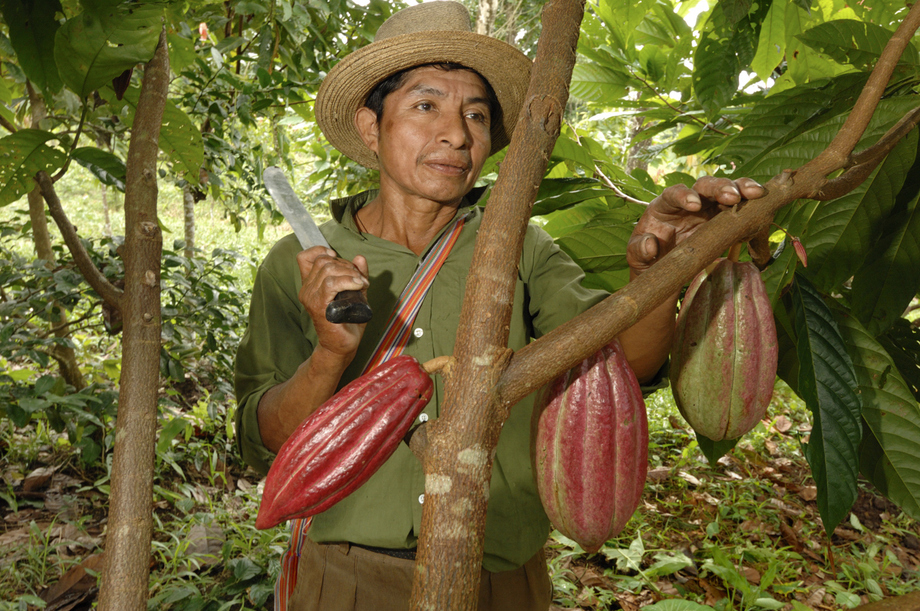

A Mayan cacao farmer with a machete tends to his trees in a rainforest in southern Belize. This farmer waited five years from planting for this young tree to produce these ripening pods -- his first saleable harvest. Southern Belize is the heartland of traditional Mayan cacao production. Cacao is one of the few cash crops in the poor, remote region. This rainforest, shade grown cacao is highly valued -- with global demand outstripping the Mayan harvests. This allows farmers to sell their special cacao to Cadburys at premium prices. The cacao becomes the main ingredient in Cadbury's gourmet chocolate bar, Mayan Gold.
In Southern Belize, Mayan and Garifuna villages bordering the 40,000 acre Sarstoon-Temash National Park, are struggling to survive, and preserve their traditional cultures. Illegal logging, poaching, and potential oil exploration, threaten their neighboring rainforest. Over-fishing by outsiders has decimated their fisheries. Meanwhile, working-age adults feel forced to leave their traditional subsistence villages, and their families, to participate in the cash economy. Among remaining farmers, many are banking on cultivating cacao in the rainforest - a highly valued product for global chocolate producers.
For all of the natural beauty, life is harsh. It rains 150 inches annually, often leaving villages ankle deep in mud. Most don't have electricity. The bus to the distant city comes every two days and travels on jarring, dirt roads.
To help villagers sustain their fragile environments and communities, see the website of its Belizean partner, www.SATIIM.org.bz
This Belize photography project is part of an ongoing, 15-year personal portfolio documenting the lives of humble people in remote regions. My subjects have included Peruvian coffee farmers, women in India’s Himalayas, Sri Lankan Tsunami survivors, Moskito Indians, Chinese villagers along the Yangtze River, as well as wilderness beauty along Yukon rivers and in Patagonia. Occasionally, this work has been published with my writing in global publications, as well as by the World Bank, U.N. agencies, and many foundations.
In all of these projects, I find myself learning from the people who generously allow me to photograph them. I try to capture in my images their special qualities. Over time, I attempt to communicate important stories of their lives to northern audiences far from their homes.
To help villagers sustain their fragile environments see www.SATIIM.org.bz
Todd Shapera
Pocantico Hills, New York
Todds@cloud9.net
www.ToddShapera.com
For my photo book, Indigenous Belize, please email me, or go to the bookstore at Blurb.com
Make Comment/View Comments